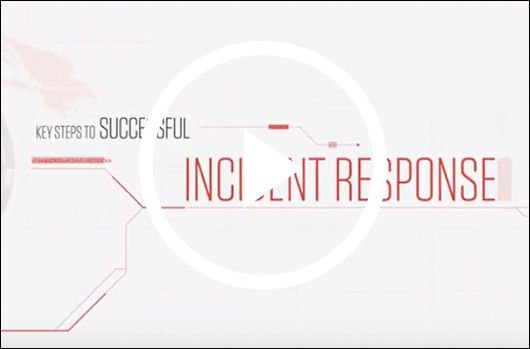- Logs tend to be
high volume
while metrics tend to have
low volume - Logs tend to have a
bursty
nature, while metrics have a
fixed rate - Logs tend can have
high dimensionality
while metrics have
low dimensionality - Logs tend to have
high cardinality, while metrics have
low cardinality - Logs tend to be
unstructured, while metrics are
structured - Logs are often
unspecified, while metrics often come with
documentation
This blog was originally published April 22, 2020 on humio.com. Humio is a CrowdStrike Company.
Ever felt like your backend system was a black box (managed by other people) and wondered how your system was doing? Logging can be the thing that opens up that box and gives you insights into your system. This is the main reason why I love logs; they make me “feel” my code, moving it from static text to a live entity. Logging is one of the primary ways we gain insights into running software systems, but is by no means the only option. Logging should be seen as part of a bigger ecosystem, alongside metrics, active monitoring, the ability to log directly into systems, and applications specific management/observability tools. That said, logging is one of the most versatile methods you have when you need answers to questions which you didn’t know beforehand. Below is a set of broad topics around logging and how to get a good logging setup. The context is logging for backend systems. A lot can be directly transferred to Apps (mobile and web) and desktop applications, but some aspects will be different.
Read Your Logs
If you only remember one thing from this blog post it should be to
read your logs. All the rest of this doesn't really matter if you don’t use your logs. If you start doing just that, a lot of what I write will be obvious. View your log as first-class citizens in your codebase. Revisit them, improve, add missing pieces of information, and remove the ones that don’t provide real value or are redundant. When writing a new module, try following it in your logs when it goes to a live system and improve the logs in that module. I often find that half the logs are irrelevant, and the rest can be improved in different ways.
Log Levels
Some use a very elaborate set of
log levels. For example, trace, debug, info, warning, error, and fatal. If that works in your context, do just that. I have always only used info, warning, and error. Everything is info by default. Error:
If something bad happens that does affect the system as a whole, this will be an error, but most often error logs are for unexpected situations, like exceptions. Often the catch part of a try-catch statement will log an error. Warning:
If something bad happens, but doesn’t really affect the system as a whole — like a request to an external system fails (once) — I often make this a warning. It could also be something that is annoying to a user. Info:
The rest will be info logs. There is a clear direction to the evolution of log levels. They tend to go from error towards warning and info. Many error situations turn out to be just everyday events that you need to handle gracefully, and thus the error log for an unexpected situation becomes an info log that happens every day. Should you always log all log levels? It depends. If you can afford it, then yes. Having extra debug levels can be a good idea, just remember that you need to iterate over your logs in order to make them good. This is also true for your conditional log levels, which you often would have turned off.
Structured or Unstructured
There is a spectrum from structured to unstructured logs, each with pros and cons. Structured logs
are easier to ship to and parse in your log management system and have a better fit for some logging frameworks. They are difficult to use directly without a log management system, which occurs in many situations such as running unit tests, running systems locally, or supporting customer systems. Unstructured logs
will almost always have some structure, but as text and not something formal like JSON. Therefore they tend to be easier to read by humans in their original format, but getting machines to extract the structure takes effort. I normally use a human-readable format that is also fairly easy to parse, like:
20-04-02T15:37:49.927+0200 INFO c.h.e.f.Data$ - writeSnapshot took_ms=5 targetFile=’/tmp/humiotest4292/global-data-snapshot.json’ size=17
The above can be parsed in all log management systems and is still readable as-is. I value the last quite high, because of the situations where it’s not handy to sign into the log management system. Some notes on log formats:
- Avoid multi-line logs if possible. Java stack traces are notorious for being multi-line and they can be a pain to get right.
- You can only choose the log format for new systems. Refactoring existing systems from unstructured logs to structured will almost never be done, so expect to support many log formats.
Shipping
The traditional way to ship logs to a log management system is to have your logging framework log to a file and then have a log agent ship those to your log management system. This works well for a lot of situations and one really big benefit to file base logging is that when things start breaking down, you can always ssh into your server and tail the logs as a last resort. In this situation having human-readable logs is a bonus. Also, with file-based logging you are in a good situation to not lose any logs if the log management system is unreachable. The log files on disk serve as a fine buffer if you’re having network issues. You need to use a log shipper that can keep track of which logs have been reliably delivered to your logging solution and retry sending those that failed to be delivered. Note that you should always have log rotation! Getting a disk-full failure by filling the disk with old logs is not something you want. Another method is to ship directly from your logging framework. This might be easier to set up in some environments and on platforms where services can move around autonomously due to failure or scaling up.
- Make sure you know what delivery guarantees your logging framework provides. How many times will it retry sending logs if it cannot deliver them?
- Always enable batch sending. You do not want to do one request per log line.
- Make sure that your retry-and-batching strategy is finite. You do not want your log framework to give you out-of-memory failures.
Note, if you have multiline logs, the right place to handle those is either in your logging framework or in your log agent. The log management system will not be able to handle this reliably.
What to Log
What to log is really dependent on your application, but in general you should add context to your logs and log key lifecycle events for your workflows. All code belongs to some workflow, where workflow is very broadly defined. Examples are web requests, transactions, services, or batch jobs. You should always log key events and state changes in your workflows, such as initialization, death, errors, key decisions made or key state changes, or interactions with other workflows. Also, add timings and between steps in your workflows. Having an idea as to where time is spent is really valuable. For adding context to your logs the following is a list of ideas:
- Thread name
- Class name
- Line number - where the log line is
- Workflow IDs like request ID or transaction ID
- If the code has an ID of some sort it is probably a good idea to log it
- SQL statement
- If you have a list of something, log its length





![Helping Non-Security Stakeholders Understand ATT&CK in 10 Minutes or Less [VIDEO]](https://assets.crowdstrike.com/is/image/crowdstrikeinc/video-ATTCK2-1)
![Qatar’s Commercial Bank Chooses CrowdStrike Falcon®: A Partnership Based on Trust [VIDEO]](https://assets.crowdstrike.com/is/image/crowdstrikeinc/Edward-Gonam-Qatar-Blog2-1)











































